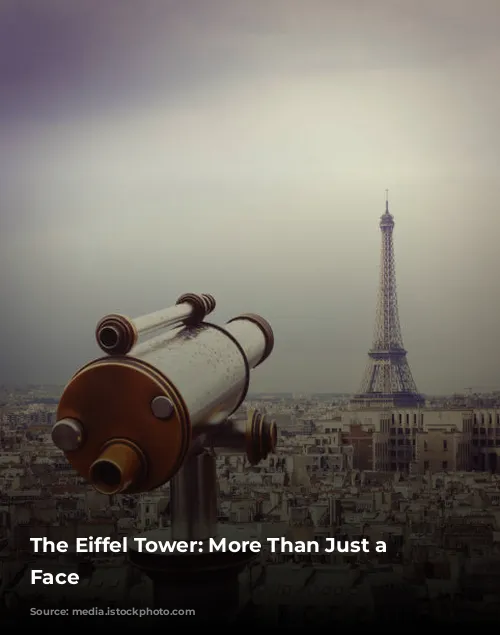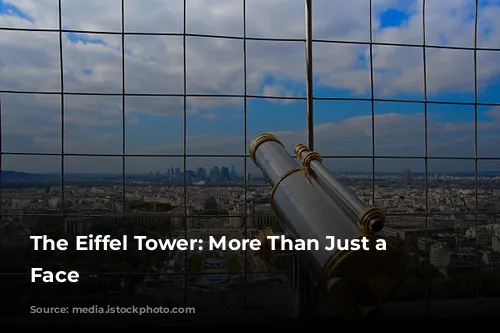The Eiffel Tower, a symbol of Paris and romance, stands as a testament to French ingenuity and industrial might. It was conceived as the centerpiece of the 1889 World’s Fair, a celebration of the centennial of the French Revolution. This towering marvel of engineering was completed in a remarkably short period of two years, two months, and five days, showcasing the speed and precision of Gustave Eiffel’s firm.
The tower was constructed using an astonishing 7,300 tons of iron and 2.5 million rivets, standing tall over the Champs de Mars. Its grandeur attracted over two million visitors during the fair, a clear indication of its success in capturing the world’s attention.
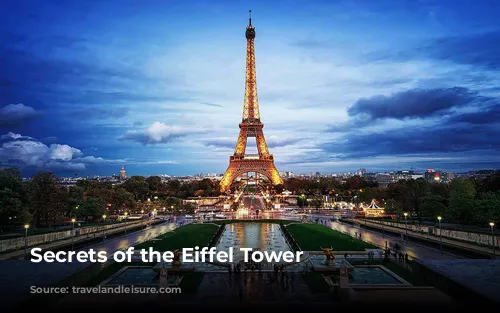
Beyond the Iconic Silhouette
Despite its widespread fame and the more than 300 million people who have marvelled at its beauty, the Eiffel Tower still holds a few secrets.
While the tower’s silhouette has inspired replicas in various cities around the globe, its design was not universally embraced at its inception. A group of prominent artists, including Guy de Maupassant, penned a protest letter published in the newspaper Le Temps, condemning the tower as an “ugly, barbarous mass” that would overshadow the city’s other architectural treasures.
However, these protests fell on deaf ears. The Eiffel Tower, defying its critics, became one of the world’s most visited monuments, welcoming nearly seven million visitors annually. It has endured the test of time, proving to be an enduring symbol of France.

Unveiling the Eiffel Tower’s Secrets
Gustave Eiffel reserved the topmost level of the tower for himself, creating a private apartment where he hosted renowned guests like Thomas Edison. This space, now transformed into a recreation of his office, offers visitors a glimpse into his world.
While the tower bears his name, the actual design was the work of Maurice Koechlin and Emile Nouguier, engineers employed by Eiffel’s company. They sought the help of French architect Stephen Sauvestre to address public concerns about the original design’s stark, utilitarian nature. Their combined efforts ultimately triumphed over 100 other proposals to become the main attraction of the 1889 World’s Fair.
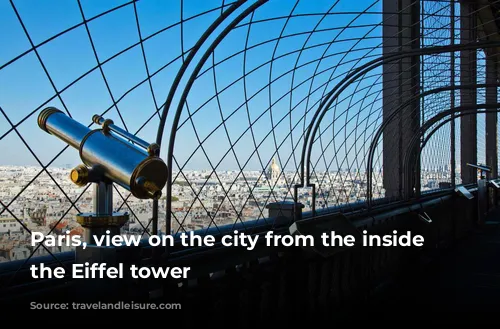
A Tower With a History
The Eiffel Tower was initially intended to be a temporary structure, scheduled for demolition after 20 years. However, Eiffel’s ingenuity intervened. He incorporated a radio antenna and wireless telegraph transmitter into the tower’s design, demonstrating the potential of radio technology to the government. This strategic move secured a 70-year extension to his lease, ensuring the tower’s continued presence.
The Eiffel Tower, a symbol of France, narrowly escaped destruction during World War II. Hitler’s plans to level Paris included demolishing the tower with explosives. Fortunately, Allied troops intervened before the order could be carried out. While the tower survived the war intact, it suffered significant damage during subsequent air raids.
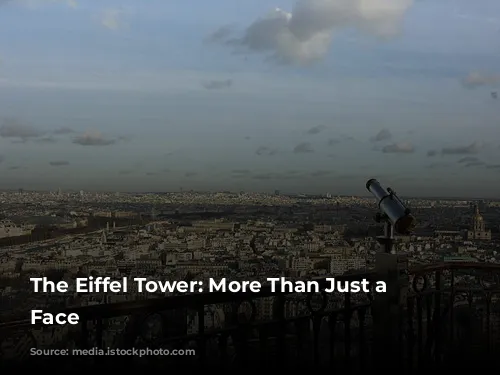
A Tower of Many Facets
The Eiffel Tower has served as a workspace for various businesses throughout its history, including the French newspaper Le Figaro and a post office. A wooden theater, designed by Sauvestre, also graced its first floor.
Eiffel, a dedicated scientist, established a meteorology lab on the tower’s third floor. Here, he conducted experiments in physics and aerodynamics, even constructing a wind tunnel. The lab was also open for other scientists to utilize for their research endeavors.
The tower’s massive iron structure is designed to withstand wind forces, swaying slightly during storms. The heat of the sun also plays a role, causing the tower to expand a few centimeters in the summer months. This expansion, combined with the sun’s heat, results in the tower leaning about six inches away from the sun.
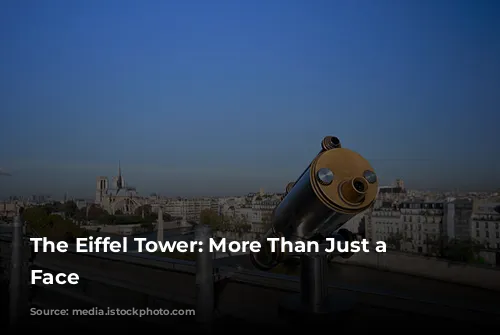
A Legacy Engraved in Iron
The names of French scientists and engineers who contributed to 19th-century scientific advancements were etched onto the Eiffel Tower, a lasting tribute to their legacy. These engravings, painted over in the early 20th century, were restored in the late 1980s, making them visible once again. Visitors with a keen eye can spot names like Foucault, Dumas, and Perrier inscribed on the iron surrounding the tower’s first floor.
A Labor of Love
A dedicated team of 50 specially trained painters diligently maintains the Eiffel Tower’s grandeur. Their work includes regular inspections for corrosion, stripping away worn sections, applying anti-rust primer, and painting the tower with 60 tons of paint. The entire process, carried out by hand, can take between 18 months and three years, depending on weather conditions.
Illuminating the Night Sky
The Eiffel Tower’s inaugural light show took place in 1925, coinciding with the International Exhibition of Modern Decorative and Industrial Arts. Andre Citroën, an automaker, sponsored the spectacle, featuring 200,000 bulbs that created a dazzling display of stars, zodiac symbols, comets, and, naturally, Citroën’s car brand logo.
Sixty years later, a new light show, featuring 336 yellow-orange spotlights, graced the night sky. The current, iconic sparkling light show, comprised of 20,000 bulbs, made its debut on New Year’s Eve of 1999. This mesmerizing display can be enjoyed nightly for the first five minutes of every hour starting at 8 p.m., culminating in a 10-minute grand finale at 1 a.m.

A Tower of Protection
While the Eiffel Tower itself is in the public domain, its illumination is protected by copyright under French law. This stipulation, however, only applies to professional photography. Visitors are free to capture personal photos of the tower and its nighttime light show without any legal concerns.
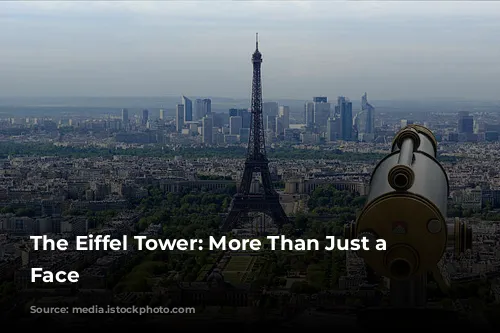
Climbing to the Top
For those adventurous souls who dare to climb the stairs to the top of the tower, a celebratory glass of bubbly at the Champagne Bar awaits. There’s no better way to savor the breathtaking views than with a touch of sparkle.
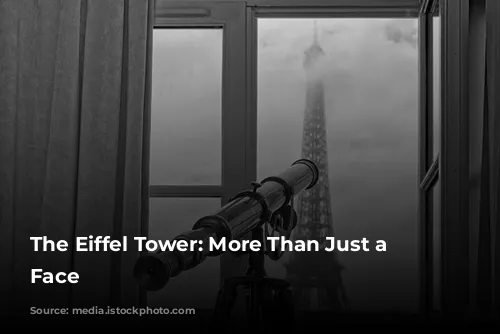
Eiffel’s Legacy Beyond the Tower
Gustave Eiffel’s contributions extend beyond the iconic tower. He was instrumental in designing several major bridges, railways, and viaducts across Europe. Among his notable achievements are the Maria Pia bridge in Porto, Portugal; Nyugati (Western) Railway Station in Budapest, Hungary; Pont de les Piexateries Velles in Girona, Spain; and the Côte d’Azur Observatory’s dome in Nice, France.
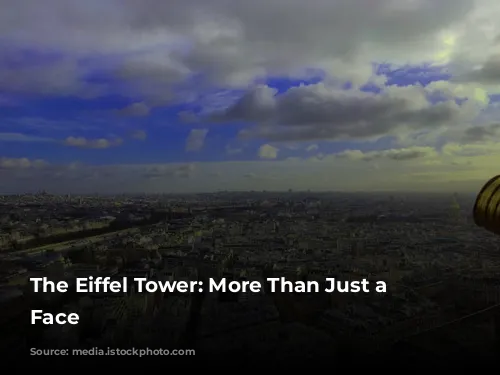
A Tower That Reached for the Sky
At its grand opening in 1889, the Eiffel Tower held the title of the tallest building in the world, standing proudly at 312 meters (1,024 feet). It surpassed the Washington Monument’s record of 169 meters (554 feet). This accolade lasted for 40 years until the Chrysler Building in New York City, at 319 meters (1,046 feet), claimed the new record. The Empire State Building, at a towering 381 meters (1,250 feet), dethroned the Chrysler Building in 1931. Despite relinquishing its title, the Eiffel Tower holds a special place in history for its remarkable 40-year reign as the world’s tallest structure.
